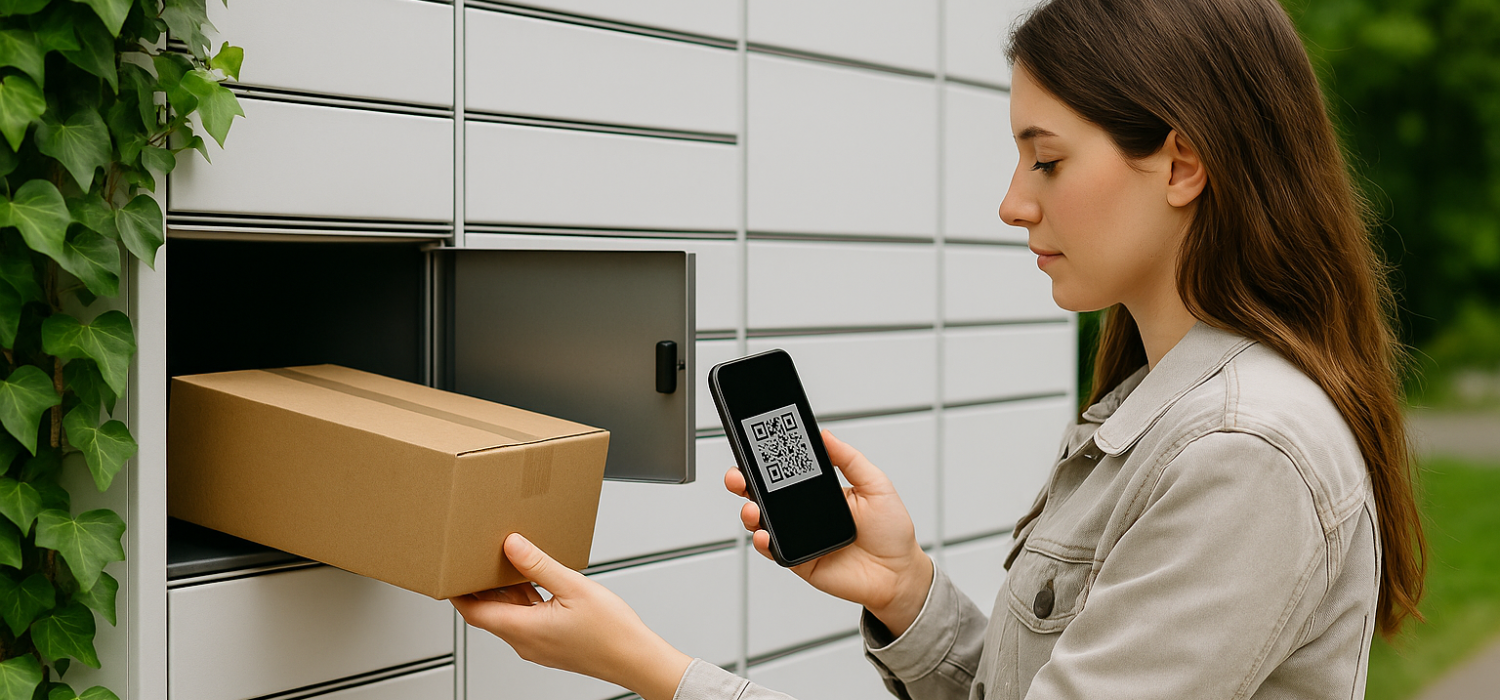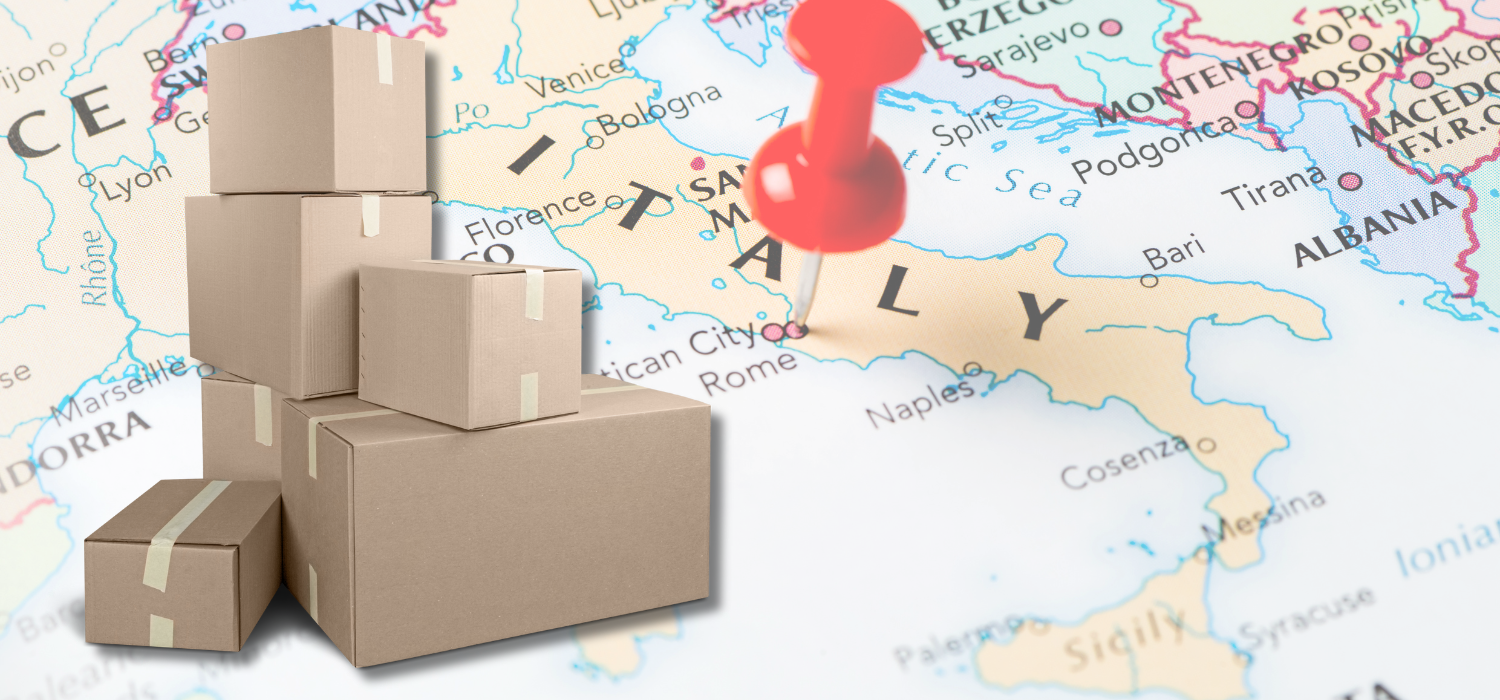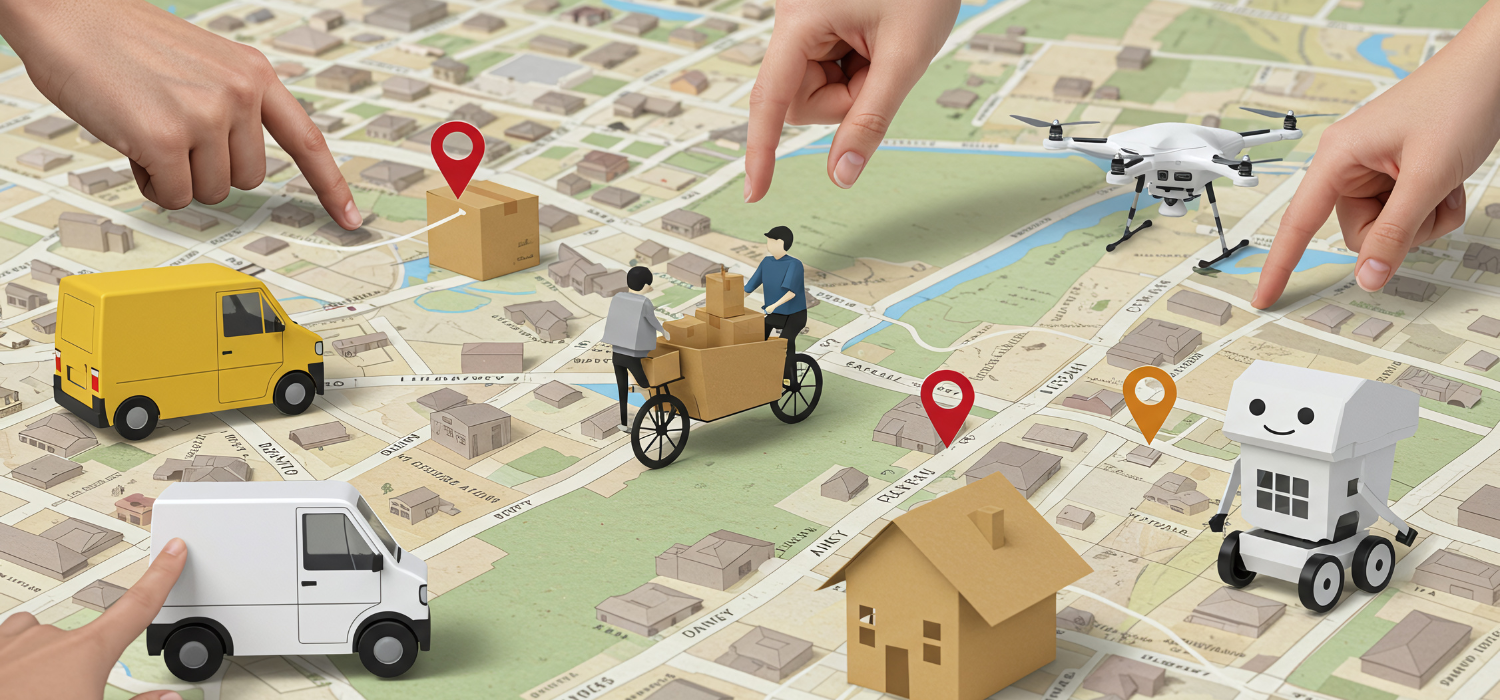In recent years, parcel lockers have spread rapidly across European cities, transforming from an experimental solution to a fundamental part of urban logistics. From online shopping to e-commerce returns, more and more parcels are passing through automatic lockers available 24/7: a constantly expanding network that is reshaping the way we buy and receive goods.
The European smart locker market reached an estimated value of $295.8 million in 2024, with expected growth at a compound annual growth rate (CAGR) of 10.9% between 2025 and 2033. On the operational front, the major players are consolidating their leadership. To cite just a few examples, InPost has exceeded 46,900 lockers worldwide after installing more than 11,500 new stations in 2024 alone, while bpost has expanded its Belgian network with more than 1,260 new installations, with the aim of doubling the number of stations by 2025 and tripling the number of available ‘doors’.
There are clear drivers behind this race: steady growth in e-commerce, demand for more flexible and sustainable deliveries, and finally, consumers’ now well-established habit of using out-of-home solutions. According to DHL, 79% of European shoppers return goods via parcel lockers or collection points, and more than half prefer out-of-home collection to home delivery.
But what are the innovations that are transforming the sector? From the emergence of open and interoperable networks to the integration of software and hardware, to future scenarios that will make parcel lockers even more central to the last mile. Read on to find out more!
The main technological innovations in lockers
Automated and smart parcel lockers
The new generation of parcel lockers is no longer just a series of metal boxes, but a technological infrastructure that integrates software, sensors and digital services. The most interesting innovations are moving in three directions: simplified access, data management and installation versatility. Let’s take a closer look.
Access via app and QR code. Today, more and more lockers allow parcels to be collected or returned directly via smartphone, using dedicated apps, QR codes or digital credentials. This mechanism eliminates the need for physical interaction with operators or adherence to fixed schedules, making the experience smoother for both the consumer and the courier. This solution is now widespread and set to become the standard.
Monitoring and analysis software. Smart lockers are not just for storing parcels: they collect real-time data on volumes, peak times, opening times and frequency of use. This is valuable information for logistics operators, who can thus optimise the positioning of machines, reduce delivery times and plan distribution routes more efficiently. In a context of increasingly tight margins in the last mile, the software component is proving to be decisive.
Indoor and outdoor lockers with environmental control. Hardware developments are paving the way for versatile installations: weather-resistant outdoor models equipped with security and lighting systems, indoor solutions for shopping centres, stations or university campuses, and even refrigerated lockers or lockers with temperature-controlled compartments, designed for food delivery and the management of sensitive products. The ability to customise sizes, materials and features is driving lockers into increasingly diverse contexts, from large retailers to small local communities.
Sustainable, accessible parcel lockers integrated into the smart city
The spread of parcel lockers is not just a matter of logistical efficiency. These devices are becoming an integral part of ‘smart cities’, helping to reduce traffic, emissions and barriers to accessing services. Here’s how.
Reduction of urban traffic and environmental impact. Consolidated deliveries to a single point instead of dozens of door-to-door stops mean fewer kilometres travelled and fewer emissions. Each locker installed in a neighbourhood reduces failed delivery attempts and eases pressure on urban traffic. It is no coincidence that several municipal administrations are already looking to these solutions as concrete tools to support their sustainability goals.
Accessibility for users with disabilities. The technological evolution of lockers also includes projects dedicated to accessibility. Initiatives such as FetchAid are experimenting with touch-screen interfaces enhanced by artificial intelligence, augmented reality functions and voice assistance, so that lockers can also be used by people with visual or motor disabilities. This is still an emerging field of research, but it points the way towards a more inclusive and universal design.
Strategic locations and proximity. Location remains one of the strongest levers for encouraging the use of parcel lockers. Lockers installed next to public transport stops, in supermarkets, schools or gyms increase the likelihood of them being used. Studies show that when a collection point is within walking distance, i.e. easily accessible without significant detours from the customer’s route, volumes increase significantly. In this sense, the logic of proximity is redefining the way lockers fit into the urban fabric, transforming them into real neighbourhood hubs.
Parcel Lockers and customer experience: what customers want today
While parcel lockers represent a technological innovation, their true value for e-commerce, couriers and logistics operators is measured in very concrete terms: greater flexibility for customers, reduced operating costs and a safer and more transparent user experience. These are the three pillars that explain why lockers are becoming a strategic asset in the last mile. Let’s take a closer look.
Flexibility in collection and returns. Online consumers are demanding more and more freedom: not only to choose what to buy, but also when and where to collect or return a parcel. Lockers and collection points allow deliveries to be adapted to daily needs, overcoming the time constraints typical of home delivery. For brands and e-commerce businesses, offering this option means reducing abandonment in the funnel and increasing customer loyalty.
Reduced delivery and return costs. Every failed delivery attempt represents an additional cost for couriers. With lockers, the parcel is left in a single location accessible to multiple recipients, drastically reducing empty trips. Return processes also become more streamlined: automation eliminates manual steps, speeds up management and frees up operational resources. This has a direct impact on margins in a sector where last-mile costs account for up to 40% of the total.
Security, reliability and transparency. It’s not just about convenience, but also about trust. Modern lockers offer real-time tracking, push notifications to users and protection systems against theft or damage. Increasingly intuitive interfaces lower the barrier to use, ensuring a consistent and frictionless experience. These elements translate into greater customer satisfaction and a competitive advantage for the operators who adopt them.
The role of GEL Proximity in new locker networks
At this point, however, it is important to emphasise one essential element: the future of lockers does not depend solely on hardware, but also – and perhaps above all – on the ability to network them and enable them to communicate with multiple couriers, e-commerce operators and consumers. With this in mind, GEL Proximity offers the key tools to transform individual installations into a scalable and sustainable urban infrastructure.
Enabling technology for Out Of Home shipments and returns
GEL Proximity is a technology platform that connects e-commerce, logistics operators and carriers with the largest European network of lockers and collection points: over 500,000 already active in newsagents, stationers, post offices, tobacconists, service stations and automatic lockers.
Through dedicated APIs and a modular integration library, enabling new Out Of Home delivery options directly at checkout is quick and easy. This means being able to offer:
- direct shipments to lockers or PUDOs as an alternative to home delivery, with 100% success on the first attempt and reduced logistics costs;
- automated returns management via lockers or proximity points, simplifying the user experience and eliminating operational inefficiencies.
The added value is not only logistical: integrating GEL Proximity allows eCommerce businesses to reduce shopping cart abandonment, improve customer experience and contribute to environmental sustainability, thanks to a model that reduces empty journeys and CO₂ emissions.
The logistics orchestrator: the new frontier
A particularly significant innovation of GEL Proximity in the field of city logistics is its role as a last-mile orchestrator. This software allows you to:
- coordinate a network of urban micro-hubs and lockers/PUDOs in an operator-agnostic manner: regardless of who owns or manages a locker or micro-hub, the orchestrator can integrate multiple last-mile players into the logistics chain;
- optimise the management of final delivery flows: sorting, consolidation, redistribution from micro-hubs to lockers or collection points, minimising kilometres and downtime;
- obtain real-time visibility on parameters such as parcel volume, network performance, locker and collection point utilisation, route and time flexibility, thus enabling data-driven decisions based on the actual use of collection points and lockers.
The orchestrator is therefore not just a simple back-end component, but a true enabler of resilient and scalable last-mile networks, capable of supporting the growth of e-commerce and the challenges of urban logistics.
Sustainability and competitiveness: why integrate GEL Proximity technology
The adoption of smart lockers, together with orchestration solutions and urban micro-hubs, is no longer just a technological choice. Today, it translates into concrete benefits that affect three areas that are crucial for the future of logistics: environmental sustainability, cost efficiency and quality of customer experience.
Reduced emissions. Optimised routes, fewer empty runs and consolidated deliveries to a single point drastically reduce failed attempts and the impact on urban traffic. The result is a significant reduction in CO₂ emissions, in line with smart city objectives.
Lower operating costs. Centrally managed deliveries and returns save time and labour, minimising waste. The use of shared infrastructure, such as lockers and proximity points, also allows for better use of existing assets in the area.
Added value for the end customer. Speed, choice and greater transparency make the experience smoother and more satisfying. For e-commerce, this means fewer problematic returns and greater customer loyalty; for couriers, it means more efficient vehicle rotation and optimised resource management.
In short, as we have seen, lockers are evolving rapidly: they are becoming increasingly smart, accessible, integrated and sustainable. But for these innovations to generate value, platforms capable of systematising them are needed: this is where GEL Proximity comes in.
Want to understand how innovations in lockers can transform your business’s logistics? Contact us now and find out how GEL Proximity can support you in designing more flexible, multi-operator and customer-oriented networks.













